How to get food, farm and fertility in Manor Lords explained
Learn how to grow and rotate crops and sustain your population.
If you want your Manor Lords settlement to expand, you’ll need to ensure you have enough food to support your population. One of the main ways of producing food is through farming, and making large amounts of bread can grow your settlement from a sleepy village into a bustling town.
Farming crops is also essential for the production of resources such as Ale and Linen, which will help you upgrade your Burgage Plots and increase your settlement level.
Getting to grips with Manor Lords’ farming systems is a little trickier than it might first seem, however. You’ll need to navigate factors such as crop rotation, soil fertility and environmental hazards if you want a successful harvest, so read on for our in-depth walkthrough on how to get food and farm in Manor Lords.
On this page:
- Food and crop types in Manor Lords
- How to check soil fertility
- Building a Farmhouse and fields
- Crop rotation explained
- How to thresh Wheat into Grain
- Best development points for food and farming
Food and crop types in Manor Lords
There are four types of crop that can be grown in fields using the Farmhouse building in Manor Lords. These can eventually be refined into the following products:
- Wheat > Grain > Flour > Bread
- Rye > Grain > Flour > Bread
- Barley > Malt > Ale
- Flax > Linen > Clothes/Gambesons
It’s worth noting that Rye can only be accessed once you have unlocked the Rye Cultivation upgrade in the town development tree.
Emmer is also another word the game uses for Wheat.
How to check soil fertility in Manor Lords
On starting a new playthrough, one of the first things you’ll need to do is check the soil fertility of your region. This determines which crops will grow best on your land, and where you should plant them.
To bring up the soil fertility overlay, click on your construction menu, then look at the overlay options on the right-hand side of your screen. This will show you options to view Emmer (Wheat), Flax, Barley and Rye fertility.
The best areas will be shown in a vivid green, while low fertility areas will be shown in orange or red. Keep an eye out for the plus symbols, as clusters of three will mean that an area is particularly fertile.
If your soil fertility is looking poor for several crops, you may want to consider importing crops through the Trading Post at an early point in your game. Alternatively, you can start a new save to see if your next town has better access to fertile soil.

Building a Farmhouse and fields
Once you have located an area with good soil fertility, the next step is placing the Farmhouse building from the Farming section of the Construction Menu. You will then need to create a field in which to grow crops, which can be found in the same menu.

Make sure that your field is the right size: a field that’s too small will result in a low yield, while one that’s too large will be difficult for your workers to plough efficiently. The size of a field is measured in units called Morgen, and the game recommends a field size of one Morgen for a starting village. It’s best to veer on the smaller side of this, however, as a lot of tiny fields are easier for your farmers to manage than one large field.
Keep an eye on the seasons
After selecting a crop for your field and assigning a family to the Farmhouse, workers will automatically start plowing the field and sowing the crops. These are harvested in September during Harvest Season. It’s worth watching the calendar closely, as you can move families over from other buildings to help gather as many crops as possible during harvest.
Don’t panic if your first year results in no crops, as small starter settlements can survive on Meat and Berries during their first winter. Fields created late in the year can sometimes remain barren if workers have not been given enough time to plow and sow the fields before harvest season.

You can track your crops’ progress and projected yield by clicking on a field. The projected yield will be impacted by field fertility, how effectively your farmers plow and sow the fields, and adverse weather conditions - which can sometimes damage the crops.
Crop rotation explained
After a crop has been harvested, the fertility of that field will be reduced for the next year. For this reason, it’s best to rotate your crops to maximise your yields.
One way of doing this is by creating three small separate fields, planting different crops in two of them (such as Wheat and Flax), and keeping one fallow. When the next year rolls around, you can then rotate these so that each field is given a different task, giving your fields a chance to recover. If your soil fertility still isn’t improving, then you can try leaving a field fallow for two years before replanting a crop.

You can automate crop rotation by clicking on a field, then setting the crop type for each of the upcoming three years.
If you unlock the Fertilization upgrade in the development tree, you can convert fields into pastures where animals can graze when the fields are kept fallow. This increases the speed at which lost fertility is restored, making it a useful part of your crop rotation cycle. To convert a field, you will need to spend a one-time cost of five Planks. It’s also a good idea to build your Sheep Farm near your crop fields so your herders can access the animals quickly.
How to thresh Wheat into Grain
Be aware that converting Wheat (or Rye) into Bread has a somewhat hidden stage, which can cause a potential bottleneck if you’re not careful. Once Wheat has been harvested, it must first be threshed into Grain before it can be taken to the Windmill and turned into Flour, and then eventually baked at a Communal Oven (or Burgage Plot Bakery Extension).

Threshing takes place at the Farmhouse, and this activity can sometimes be delayed if your workers are overstretched and busy plowing multiple fields. To avoid this, make sure you have enough workers assigned to the Farmhouse, and avoid creating too many fields too early. You can also set threshing to high priority in the advanced tab of the Farmhouse menu.
Another tip is to place your Windmill and Communal Oven close to the Farmhouse, as this will reduce the amount of time your workers need to commute when turning your Wheat into Grain, Flour and Bread.
Best development points for food and farming
As you increase your Manor Lords settlement level, you will gradually be given development points that can be used to unlock upgrades within the town development tree.
If your region is suitable for farming, you should look to unlock abilities within the farming branch of this skill tree. This will give you access to upgrades such as the Heavy Plow, which allows you to employ oxen at the farmhouse to plow fields more efficiently.

Meanwhile, unlocking Rye Cultivation will give you access to the Rye crop. Like Wheat, this can be processed into Flour, but Rye is much more resilient and can be grown in places with lower fertility. If your region’s soil fertility is somewhat lacking, this can be a great option.
Once your farm is established, don’t forget to unlock the Fertilization upgrade to turn your unused fields into pastures, which will improve the rate at which lost fertility is restored.
There are many other useful options in this tree, but think carefully about the order in which you unlock development upgrades: some are more useful in the early game than others.
Remember that it’s best not to rely on one source of food: extreme weather events can damage your crops, while bandits can also steal your resources. For this reason, you should diversify your food supply with Meat and Berries from your work buildings, or Vegetables and Eggs grown in your Burgage Plots.
It takes a great deal of tinkering to optimise your farms in Manor Lords, but that’s all part of the fun. Keep experimenting and you’ll eventually create a system that will reliably produce crops year on year.
That's eveything you need to know about farming in Manor Lords. For more help getting started in Manor Lords, find out what to do first in our beginner's tips and tricks guide, as well as how to trade goods and animals to bolster your town further. You can also put your farming know-how to even better use by learning how to make Ale from your Barley fields.


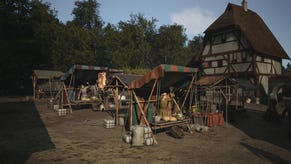

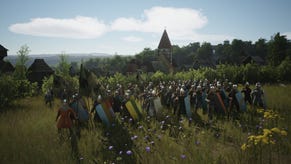


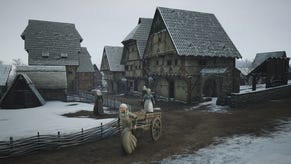
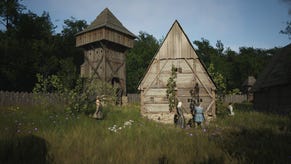
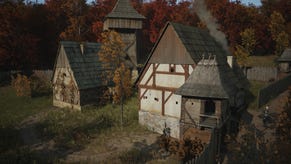







.jpg?width=291&height=164&fit=crop&quality=80&format=jpg&auto=webp)